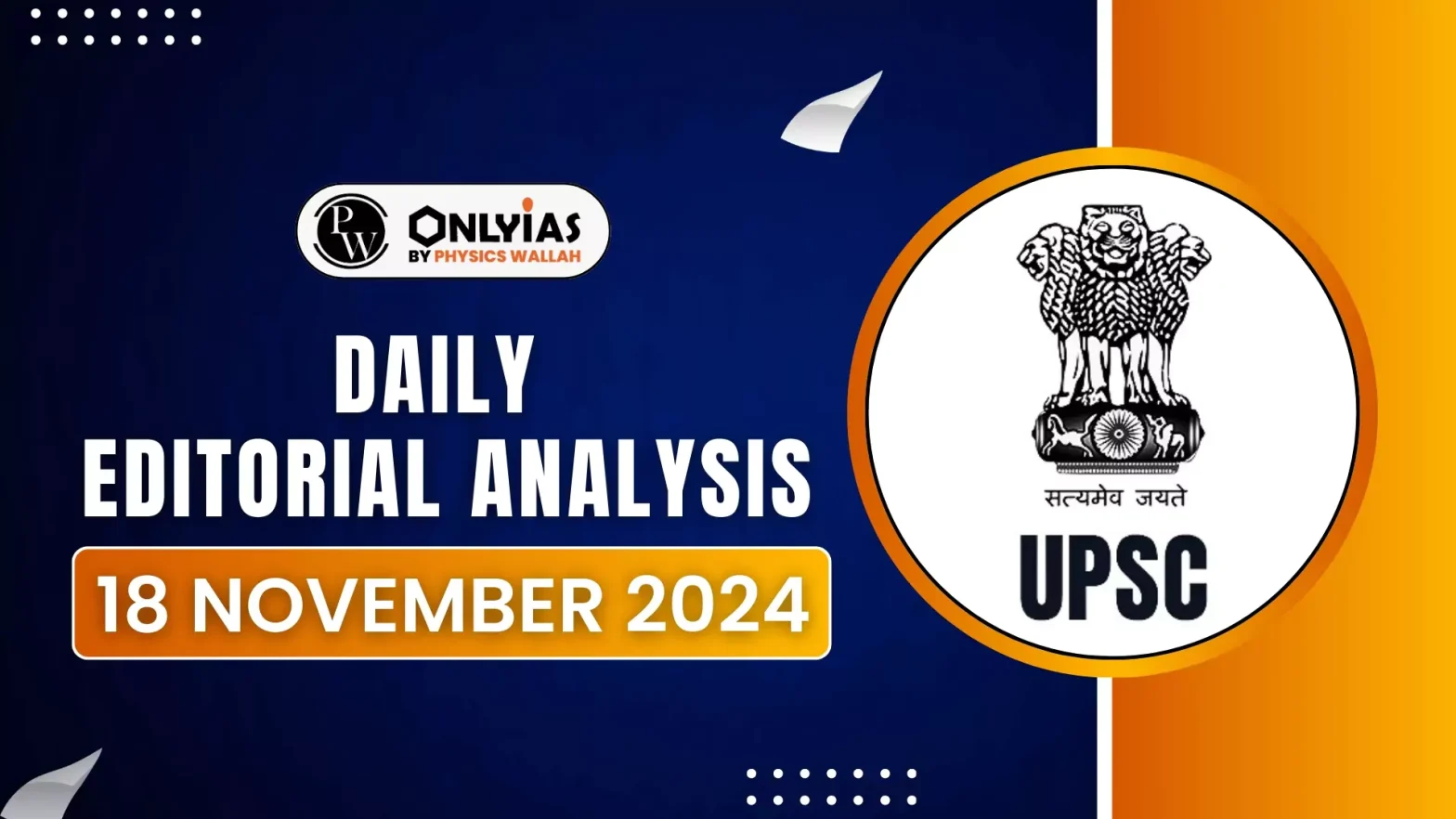Former Chief Justice D.Y. Chandrachud emphasised that cooperative federalism, a cornerstone of Indian democracy, does not require states to align with Union policies. He cited a 1977 Supreme Court ruling to reinforce this principle.
Federalism
- Meaning: Federalism is a system of government in which the power is divided between a central authority and various constituent units of the country.
- Constitutional Division: In the Seventh Schedule of the Indian Constitution there is a clear demarcation of subjects that fall exclusively under the jurisdiction of the Union and those that are under the states.
- Union List: The Union List encompasses subjects of national significance, such as defence, foreign affairs, banking, and currency.
- State List: The State List comprises subjects of state and local significance such as police, trade, commerce, agriculture, and irrigation.
- Concurrent List: The Concurrent List includes subjects of shared interest for both the Union and State Governments, such as education, forests, trade unions, marriage, adoption, and succession.
Enroll now for UPSC Online Course
Cooperative Federalism
- Cooperative federalism refers to a collaborative relationship between the central and state governments, where both levels of government work together in the decision-making process and share responsibilities for national development.
Competitive Federalism
- In competitive federalism, states engage in horizontal competition with one another to attract investments and talent by improving infrastructure, public services, and regulatory frameworks.
- Example: An example of horizontal competition is the race between states to attract semiconductor companies or companies like Tesla.
- Vertical Competition: This competition can also extend to vertical competition, where states compete with the Centre over policy initiatives and resource allocation.
- Competitive Federalism After 1947: After Independence, India experienced one-party dominance, primarily led by the Congress Party, and the implementation of centrally planned Five-Year Plans.
- As a result, competitive federalism was largely absent in India during this period, with the Centre exerting significant control over state policies and development.
- Regional Parties and LPG Reforms: Later, with the emergence of regional parties and the liberalisation of the economy through the LPG (Liberalisation, Privatization, and Globalization) reforms in the 1990s, competitive federalism gained momentum.
Conditions for efficient Cooperative Federalism
Cooperative federalism works in situations where all parties involved stand to gain and Centre and State work for the welfare of the people.
- Uneven Benefits: Cooperation is challenging when benefits are unevenly distributed.
- It is possible only if those who gain more compensate those who lose, requiring transparent mechanisms for negotiation and conflict resolution to ensure fairness.
- Ground Reality: In practice, political parties often prioritise electoral gains over genuine cooperation, focusing on short-term victories rather than long-term collaboration, which undermines cooperative federalism.
Check Out UPSC NCERT Textbooks From PW Store
Case Study: The Goods and Services Tax (GST)
- The implementation of GST is a significant example of cooperation between the Union and state governments in India’s federal system.
- By creating a unified tax system, both levels of government aimed to enhance economic growth, establish a common market, and improve revenue generation.
- States were promised a 14% annual revenue guarantee over the base year of 2015-16, and a GST compensation cess was introduced to cover any shortfall in state revenues due to the new tax system.
- While the reform showcases cooperative federalism, challenges arose during the COVID-19 pandemic when the Centre claimed it could not meet its compensation obligations, citing economic hardship as an “Act of God.”
- This created friction between the Centre and states, highlighting a gap in cooperation during times of crisis.
- While GST marked a successful instance of federal cooperation, its implementation faced setbacks due to financial constraints and lack of timely compensation.
|
Challenges in Implementation of Cooperative Federalism
- Centre-State Conflict:
- Delhi-Centre Dispute: Frequent clashes over administrative powers in the National Capital Territory.
- Kerala Borrowing Limits: The Kerala government’s conflict with the Union over fiscal autonomy highlights ongoing tensions.
- Fiscal Federalism Challenges
- Division of Funds: States argue that the Finance Commission allocates a disproportionate share of funds to the Centre, leaving them with inadequate resources.
- GST Compensation: Delays and disputes over Goods and Services Tax (GST) compensation have further strained Centre-state relations.
- The Centre contends that its financial resources are limited, making it challenging to meet the demands of all states.
- Lack of Mechanism:
- Underutilization of Inter-State Council: Established in 1990 to foster Centre-state deliberations, it rarely meets, reducing its effectiveness.
- Challenges with NITI Aayog: Though designed to give states a stronger voice, instances of state representatives walking out of meetings undermine its role as a constructive forum.
Way Forward
Long-Term Solutions
- Establishing an Independent Coordination Body: An impartial, transparent body should be established to address critical issues like borrowing limits and fiscal policies.
- Promoting State Autonomy: For Indian federalism to thrive, the Centre must respect and uphold the autonomy of states.
- Strengthening Existing Mechanisms: Existing platforms, such as the Inter-State Council and NITI Aayog, must be revitalised to enable collaborative decision-making and address grievances without concentrating power at the central level.
Immediate Measures
- Regular Engagement: Frequent and structured meetings between the Centre and states are vital to fostering trust and resolving disputes effectively.
- Ensuring Transparency: Transparent sharing of information and data between the Centre and states can build mutual confidence and facilitate quicker resolutions to contentious issues.
- Resolving Pending Disputes: Prioritising the resolution of long-standing issues, such as delimitation disputes, will help reduce tensions and promote administrative efficiency.
Enroll now for UPSC Online Classes
Conclusion
The future of Indian federalism should go beyond “cooperative federalism” to include both cooperation and competition. Embracing this dynamic model will help India tackle the complex challenges of governance in a diverse and evolving political landscape.
![]() 18 Nov 2024
18 Nov 2024

